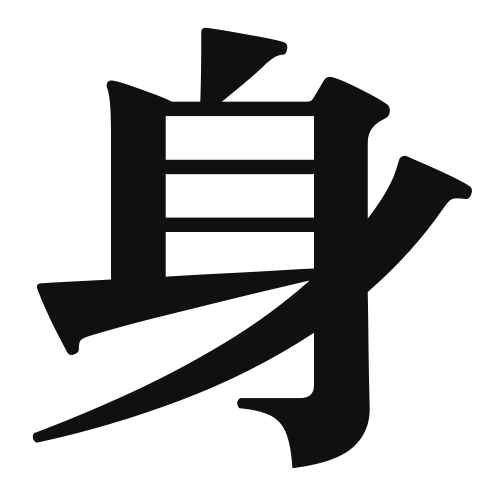1. Overview of Meaning
The kanji “身” (pronounced “mi”) primarily means “body” or “self.” It represents the physical form of a person and can also refer to one’s identity or essence.
2. Formation and Radical
The kanji “身” is classified as a pictogram, which means it originated from a visual representation of the human body. The character depicts a person standing upright. The radical of “身” is also “身,” which is used in various other kanji related to the body or self.
3. Examples of Usage
Common words and phrases that include “身” are:
- 身分 (mibun) – status or social position
- 身心 (shinshin) – body and mind
- 身近 (mijika) – close to oneself or familiar
Example sentences in daily conversation:
- 私の身分は学生です。 (Watashi no mibun wa gakusei desu.) – My status is that of a student.
- 身近な人と話すのが大切です。 (Mijika na hito to hanasu no ga taisetsu desu.) – It’s important to talk to people close to you.
4. Synonyms and Antonyms
Similar kanji with related meanings include:
- 体 (karada) – body, but it often refers to the physical aspect rather than the self.
- 自己 (jiko) – self, which emphasizes one’s identity or personal aspect.
Antonyms include:
- 他 (ta) – other, which signifies something or someone that is not oneself.
5. Cultural and Historical Background
The kanji “身” has significant ties to Japanese culture, often appearing in discussions about personal identity and social roles. It is also used in various proverbs and idiomatic expressions, such as:
- 身をもって知る (mi o motte shiru) – to know through personal experience.
- 身の程を知る (mi no hodo o shiru) – to know one’s place or limitations.
These expressions reflect the importance of self-awareness and understanding one’s role in society.
